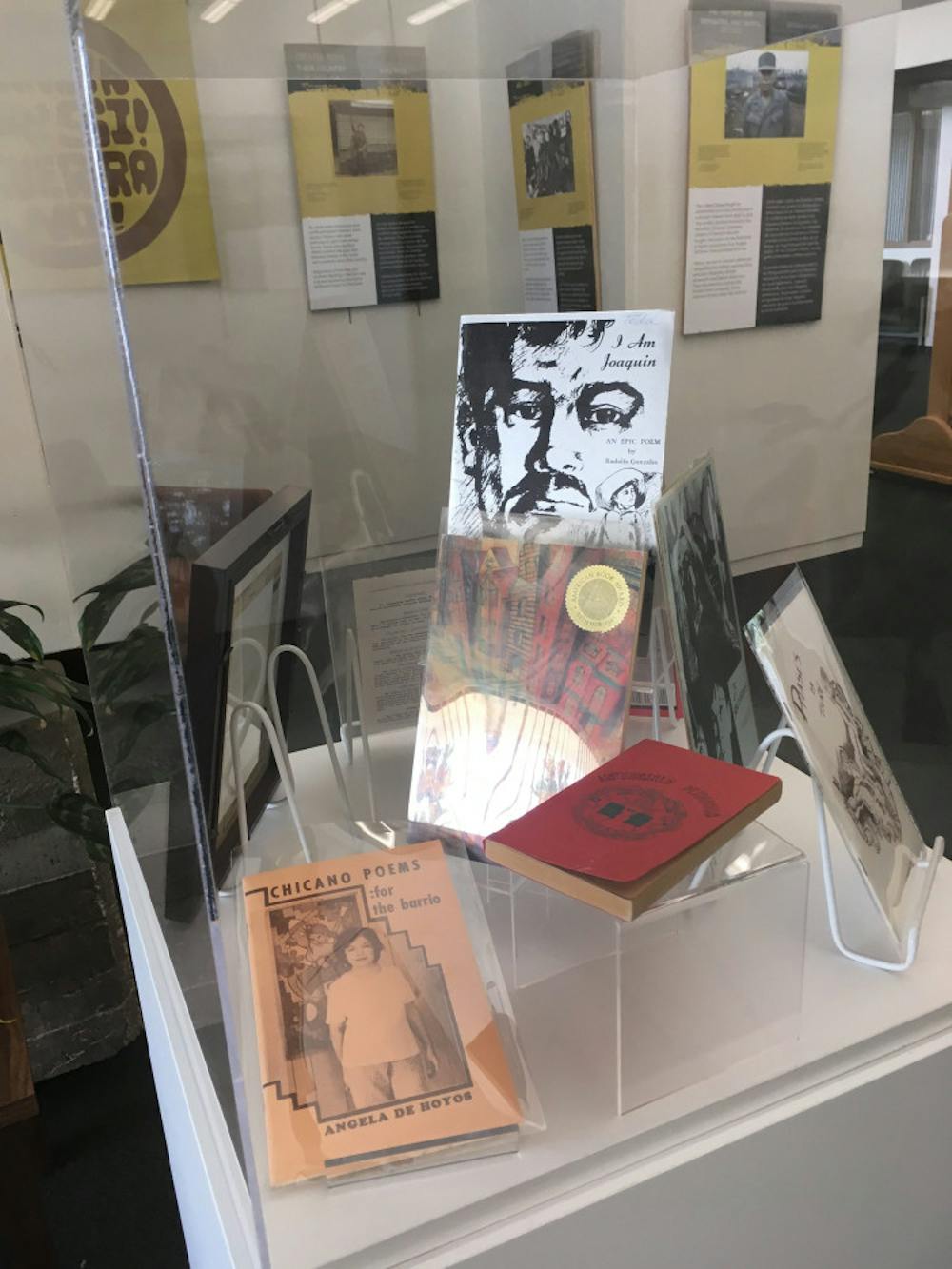El Movimiento: The Chicano Movement in Northern Colorado opened Aug. 11 in the Mari Michener Gallery. The gallery is still in development, but it is free to the public. The El Movimento art gallery pays homage to the Chicano Movement that happened all over the U.S, starting in the 1960s and ending in the 80s. Two things were consistent in the gallery: pride and power.
History Colorado put together the gallery and worked closely with the El Movimento advisory committee in putting together this exhibit. The advisory committee consists of people who are experts in the Chicano movement and are committed to its story. Printed on one of the panels is the advisory committee’s statement, “You inspire us. You have struggled and fought so future generations will know less injustice. Thank you for telling your story, and for making our community and the world a better place.”
This exhibit illustrates how Chicanos protested for their rights. The Chicano movement consisted of students and farmers protesting against institutions that discriminated against them. Many Chicanos also protested the Vietnam war.
The gallery consists of panels with photographs of Chicano activists, listing facts in both English and Spanish. There are also art and different artifacts like traditional clothing, books, posters and tools that workers used.
These pictures truly spoke a thousand words as they depicted the struggle and the pride people had in the Chicano movement. There were photos of The Brown Berets who protected protesters during strikes and walkouts; one photo depicted Rodolfo “Corky” Gonzales Mexican American boxer and activist and rallying people outside the Colorado State Capitol.
Slogans like “¡Viva la justicia!”, “Chicano means power” and “It’s better to die on your feet, than to keep on living on your knees” show how passionate and proud people were of the movement.
The term Chicano itself was used as a way to create an identity less binding than the terms Mexican American, Hispanics, and Latinos; it was a way for them to reclaim control, and many were proud to be Chicanos.
Panels also showed the struggles students faced in schools through lack of representation and discrimination. A poster stated: “We need A Chicano principle, we need more Chicano teachers.” Other panels showed Chicano soldiers fighting in Vietnam and labor workers protesting in order to get higher pay and better working conditions.
Jay Trask, head of archival services in the lower level of Michener, worked to get this exhibit together and thought it was something important to have on campus. Trask wants to represent groups, such as African Americans or Latinos that are not represented well in history. Trask also said it’s important to get primary resources so students, faculty and the community can learn and do research on these groups.
Trask connected the gallery to the political climate of America today, saying that there are many unanswered issues circulating around today.
“There are a lot of civil rights issues that we still need to talk about,” Trask said.
Trask said that this gallery shows not only what happened in the past, but facilitates discussions about human rights today and what needs to be done to ensure that everyone has rights and equal opportunities in the present and the future.








